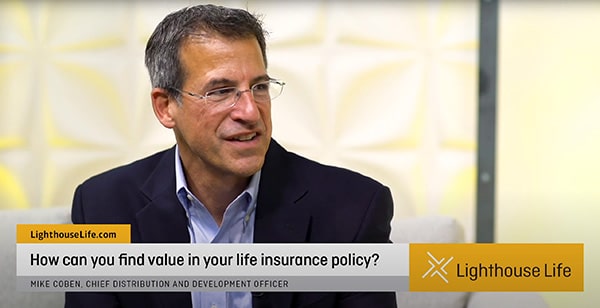Many of the factors that determine the amount of premiums your client pays for a life insurance policy are the same ones used to determine a life settlement offer and payout. These include the insured’s age and health condition, the policy’s death benefit amount, and the policy’s premiums. In addition, with life settlements, the policy’s cash value amount, the discount rate, and the rate of return on the cash value also play a part in determining the payout amount your client receives. Let’s look at each of these factors individually.
The insured’s age and health condition
Life expectancy is the key factor in determining a life settlement payout. The sooner the insured passes away, the more the investor purchasing the policy profits. For this reason, the older your client is and the worse their health condition, the larger the payout will likely be because the investor will pay premiums for a shorter period than if your client was younger and in excellent health.
The policy’s death benefit amount
Just as lottery ticket sales increase in proportion to the amount someone can receive, so do life insurance payouts. A policy with a $1 million face amount will be of much more interest and value to an investor than a policy with a $100,000 face amount.
The policy’s premiums
The policy’s premiums also impact how much your client may be offered for their permanent life insurance policy. Using our example of the $1 million face amount and all other variables except the premium being equal, a policy with a $40,000 annual premium is going to be more valuable than one with a $50,000 annual premium because the investor’s outlay of cash over the life of the policy will be less.
Just as your client wanted to pay a lower premium when they bought their policy, so does an investor. A lower cost basis means greater profitability on their investment.
The policy’s cash value
A $1 million policy with $225,000 in cash value is usually worth more to an investor and will receive a higher payout than the same policy with $175,000 in cash value. Because, with most policies, the cash value can be used to pay premiums and won’t be paid out when the insured dies, the higher the cash value, the more valuable the policy becomes.
For example, if your client’s annual premium is $10,000 and they have $100,000 in cash value, that cash value can pay the premium for ten years, boosting the investment return rate. Conversely, $50,000 in cash value for the same policy will only cover the premium for five years, which, depending on your client’s age and health, may not be as lucrative an investment over time.
The discount rate
An investor’s ultimate goal is to turn a profit from buying a life insurance policy by collecting the face amount of the policy with a nominal capital outlay. However, because the investor can’t know what their actual return will be, they use a “discount rate” to estimate it.
The discount rate is determined through a series of calculations using their chosen discount rate to produce a discounted cash flow analysis. This analysis helps them decide how much to pay you for a life insurance policy and factors in the other variables we’ve discussed.
Discount and interest rates are not the same, but a positive correlation exists. When interest rates are low, and it’s difficult to secure a higher rate of return, discount rates used to calculate payouts are also typically lower. This can result in a lower offer for a policy.
Rate of return
While their life insurance policy’s rate of return probably wasn’t a critical factor when your client bought it, it is an important factor for the investor buying a policy.
For example, if an investor pays your client $100,000 for their policy and has paid $240,000 in premiums ($24,000 over 10 years), they will have spent a total of $340,000 for the policy during those ten years. If the policy’s face amount is $500,000 and your client passes away right at the ten-year mark, the investor’s rate of return will be 6%. This may or may not be acceptable to a particular investor and will impact the offer your client receives.
The Lighthouse Life Process
If you want to learn more about helping your client sell their term, universal, or whole life insurance policy and receive a life settlement payout, you can get started by contacting us now. If your client is eligible, we’ll work with you and your client to begin the information-gathering process. Shortly after that (typically a matter of days once all the necessary information is received), we’ll get back to you with a fair offer that you and your client can evaluate.


